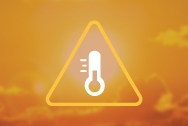PEOPLE throughout British Columbia are encouraged to be prepared for heat as many regions of the province will experience high temperatures beginning Sunday, August 13
Environment and Climate Change Canada has started to put in place heat warnings for parts of British Columbia. High temperatures are expected to begin over Vancouver Island and southwestern B.C. and may move across the southern Interior through the week. At this time, the hot weather is expected to last until Saturday, August 19.
In preparation for heat, the Province supports and co-ordinates with communities. The Province reimburses eligible costs to First Nations and local governments so they can open cooling centres. This funding may also be used to transport people to and from cooling centres. First Nations and local governments will have the most up-to-date information on where people can access a community cooling centre.
While the heat is not forecast to be as severe as during the 2021 heat dome, high temperatures are associated with higher risk of heat-related illness, especially over a prolonged period. Those most at risk are older adults, especially if they live alone, and people with health conditions, such as mental illness, substance-use disorder, physical disabilities, cognitive impairment, respiratory disease, heart disease, kidney disease and diabetes. People who are pregnant, infants and young children are also at increased risk.
Plan to stay safe in the heat:
* Identify cool zones inside your home or nearby, such as a shaded outdoor location or air-conditioned space where you can cool off on hot days.
* Consider places in your community to spend time, such as libraries, community centres, religious spaces, movie theatres or shopping malls. Shut windows and close curtains or blinds during the heat of the day to block the sun and to prevent hotter outdoor air from coming inside. Open doors and windows, and use fans when it is cooler outside to move cooler air indoors.
* Prepare to cool down by applying cool cloths and drinking plenty of water.
* Check in regularly with vulnerable family members and neighbours.
* Never leave children or pets alone in a parked car.
A map of cooling centres throughout B.C. is available on EmergencyInfoBC: www.emergencyinfobc.gov.bc.ca/
The Province’s Extreme Heat Preparedness Guide has information to help people prepare for heat and tips on how to stay safe. The guide is available in French, Punjabi, traditional Chinese and simplified Chinese. The guide is available online:
https://www2.gov.bc.ca/gov/
With higher temperatures, there is higher risk of heat exhaustion and heat stroke, which can come on rapidly.
Signs of heat exhaustion include heavy sweating, headache, muscle cramps, feeling unwell, extreme thirst and dark urine. Anyone experiencing these symptoms should try to cool down immediately by seeking a cooler environment, drinking plenty of water, resting and use water to cool their body.
Signs of heat stroke include a high body temperature, confusion, dizziness/fainting and flushed skin. Heat stroke is a medical emergency. If you witness someone with these symptoms, call 911. While waiting for help, start cooling the person immediately. Move them to a cool place, if you can, and apply ice packs and damp cloths to large areas of the skin.
The BC Heat Committee brings together subject-matter experts and leadership representing the B.C. government, health authorities and Environment and Climate Change Canada. It meets regularly, including throughout this week, to support health-system planning and monitor the provincial response supporting people experiencing prolonged exposure to heat.
In June 2022, the Province announced the BC Heat Alert and Response System to establish temperature ranges and actions taken by government and communities under heat warnings and extreme heat emergencies.












